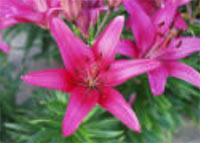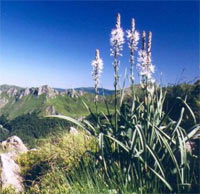
Crete Flora
 Greece is a country with a very rich flora. 6000 species of plants are registered, while 479 amongst them are indigenous. Only Crete presents 2000 species of plants, 157 of them are indigenous. In comparison, the United Kingdom, a territory twice as big as Greece has only 15 indigenous species of plants, and France, four times as big as Greece has just 65.
Greece is a country with a very rich flora. 6000 species of plants are registered, while 479 amongst them are indigenous. Only Crete presents 2000 species of plants, 157 of them are indigenous. In comparison, the United Kingdom, a territory twice as big as Greece has only 15 indigenous species of plants, and France, four times as big as Greece has just 65.
Due to its geographical location, even in relation to Crete, Lassithi presents a particular interest. The reason is because it is the eastern part of Crete and at the same time, the most southern part of Europe.
 It presents local indigenous species of plants (not to be found in other parts of the island), as well as plants we can meet only in Asia or in Africa. Selakano with its pine forest, Katharo with its cypress forest, Selena with its "Azilakos" forest, the Ha Gorge, Thripti, the palm forest of Vai, the Chrissi island, the island of Koufonissi, Dionisades and the coastal zone of Ano Mirabello (Milatos, Faros Aforesmenou) are really unique regions. The tens of gorges (almost 40), the 6 plateaus (Lassithi, Katharo, Omalos Viannou, Limnakaros, Nissimos, Chandras) and more than 1300 cavern pits registered embrace the indigenous beauties of the fauna and flora of eastern Crete.
It presents local indigenous species of plants (not to be found in other parts of the island), as well as plants we can meet only in Asia or in Africa. Selakano with its pine forest, Katharo with its cypress forest, Selena with its "Azilakos" forest, the Ha Gorge, Thripti, the palm forest of Vai, the Chrissi island, the island of Koufonissi, Dionisades and the coastal zone of Ano Mirabello (Milatos, Faros Aforesmenou) are really unique regions. The tens of gorges (almost 40), the 6 plateaus (Lassithi, Katharo, Omalos Viannou, Limnakaros, Nissimos, Chandras) and more than 1300 cavern pits registered embrace the indigenous beauties of the fauna and flora of eastern Crete.
The declaration of biologists that the driest areas present greater number of species is really obvious in Lassithi. Amongst the 2000 indigenous plant species of Crete, just a few are not to be found in Lassithi, which are yet to be found in the other geographical departments of Crete or on the neighbouring islets
